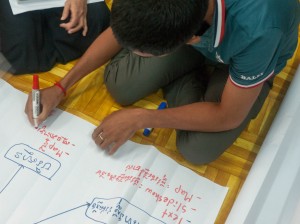Radio is hip again, take a listen
The death of radio has been predicted many times in the past decades but guess what? Radio still isn’t dead. On the contrary, it’s booming. It’s true people may not own as many radios as they used to but on the other hand, they are carrying this century’s version of a transistor radio – their smartphones – around with them in their pockets. And these magical listening devices give people the chance to hear a huge variety of radio shows and podcasts when and where they want to.
But besides new convenience, it’s also the extraordinary quality of many new radio programs that’s causing people to tune in to radio again. onMedia’s Kyle James takes a look what is being considered a new golden age of radio.
![]() read more
read more
Top apps for writing text on iPads and iPhones
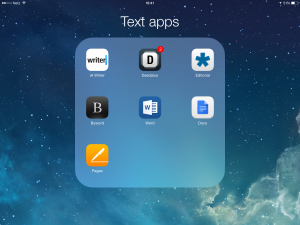 Tapping away on a tablet or smartphone can be a major hassle. The buttons are small, there are too many keyboards to have to flick through to find the character you want and it’s too easy to make mistakes especially if you have thick thumbs. But now a batch of souped-up text editing apps are making it painless for journalists to get their ideas and articles down and ready for publishing while they are away from home – and away from their laptops. OnMedia’s Sean Sinico has a round-up of useful plain text editing apps for the iPhone and iPad.
Tapping away on a tablet or smartphone can be a major hassle. The buttons are small, there are too many keyboards to have to flick through to find the character you want and it’s too easy to make mistakes especially if you have thick thumbs. But now a batch of souped-up text editing apps are making it painless for journalists to get their ideas and articles down and ready for publishing while they are away from home – and away from their laptops. OnMedia’s Sean Sinico has a round-up of useful plain text editing apps for the iPhone and iPad.
![]() read more
read more
Different cultures = different challenges for documentary filmmakers

Still from ‘A Day on the Drina’ by Ines Tanović
While documentary making is a difficult endeavour in any environment, filmmakers also face challenges that are unique to the culture and country in which they work. OnMedia’s Lesley Branagan caught up with three directors from different parts of the globe at the recent DOK Leipzig international film festival, where they sat together and compared their experiences, story inspirations and approaches.
![]() read more
read more
Respect, not bullying, gets your interview further
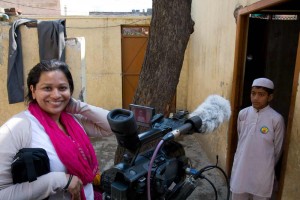 In our latest post on conducting difficult interviews, onMedia’s Lesley Branagan talks to seasoned journalist Aarti Betigeri, who has interviewed some of the most notable names in Asia for outlets such as the New York Times and the Christian Science Monitor.
In our latest post on conducting difficult interviews, onMedia’s Lesley Branagan talks to seasoned journalist Aarti Betigeri, who has interviewed some of the most notable names in Asia for outlets such as the New York Times and the Christian Science Monitor.
![]() read more
read more
Radio Ambulante – a new kind of radio for the Spanish-speaking world
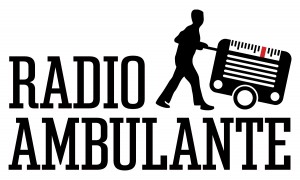 Bringing powerful audio stories to Spanish speakers across the Americas, that’s the goal of Radio Ambulante. The California-based show is a home for long-form, sound-rich radio features driven by strong characters and compelling voices – a format that is not very common in the Spanish-speaking world.
Bringing powerful audio stories to Spanish speakers across the Americas, that’s the goal of Radio Ambulante. The California-based show is a home for long-form, sound-rich radio features driven by strong characters and compelling voices – a format that is not very common in the Spanish-speaking world.
The show was inspired by a reporting trip novelist Daniel Alarcón made to his native Peru on assignment for the BBC. While investigating migration there, Alarcón travelled across the country recording personal stories from a wide range of people. But when he later heard the final mix, he was disappointed that the producers had largely highlighted the English speakers he talked to, leaving out much of the compelling material in Spanish. He wondered what the result would be if there was a place where Spanish-language voices could be heard.
In 2012, with the help of a successful Kickstarter campaign, Radio Ambulante was born. Programs have featured a transgender Nicaraguan woman living with her wife in San Francisco, a Peruvian stowaway describing his frightening journey to New York, and an Argentine who was jailed during that country’s dictatorship and given the choice to either work or to die. “Ambulante” can mean traveling or itinerant but also refers to “ambulantes”: street vendors who sell all kinds of wares in many Latin American cities.
While Radio Ambulante has a growing list of terrestrial stations that carry it, the show is largely distributed digitally. In early October, Radio Ambulante was awarded the Gabriel García Márquez Journalism Award in the innovation category. onMedia put a few questions to Radio Ambulante’s co-founder and executive director, Carolina Guerrero, about how the show’s format has been received in Latin America and where the show wants to go to from here.
![]() read more
read more
Useful gadgets for journalism trainers
Fortunately at DW Akademie we have access to professional equipment for training courses and are very well supported by our technical staff.
But along with bringing training equipment such as VJ camcorders, laptops or audio recorders, packing a few travel-size gadgets can help trouble-shoot problems you might encounter during courses and help your participants.
For onMedia, journalism trainer Guy Degen opens up his grab bag of gadgets to make training and life a little bit easier on the road.
![]() read more
read more
Math tips for numerically challenged journalists
For a lot of journalists, dealing with numbers and math can be a little scary. There’s a reason many reporters will say they went into journalism instead of finance or engineering. It’s a love of words and language.
But journalists need to have a grasp of the basics since working reporters deal with math pretty much every day. Numbers make up the foundation of many stories – the municipal project is over of under budget, the politician is some percentage up or down in the polls, violence rates this year are over or below the ten-year average. So there’s really no choice but to get your head around some fundamental math concepts.
onMedia’s Kyle James, for whom math can be a struggle, offers this quick summary of a few calculations you need to know to do your job well and where you can go online to get help when all those numbers just start swimming in your head.
![]() read more
read more
How to plan your multimedia story
An online multimedia story is a combination of video, text, photos, audio, graphics and interactive elements where each aspect complements the others. It allows a reporter to draw on the strength of each medium to tell a more compelling story.
But making a multimedia story really shine requires forethought and planning. Even before going out to report, journalists need to think about how they’re going to approach the story, when they’re going to use video, text, sound or photos, and then tie everything together to create a cohesive package. onMedia’s Kyle James has tips on doing the prep work to make sure your multimedia story is a success.
![]() read more
read more
How to improve your quotes and voice clips
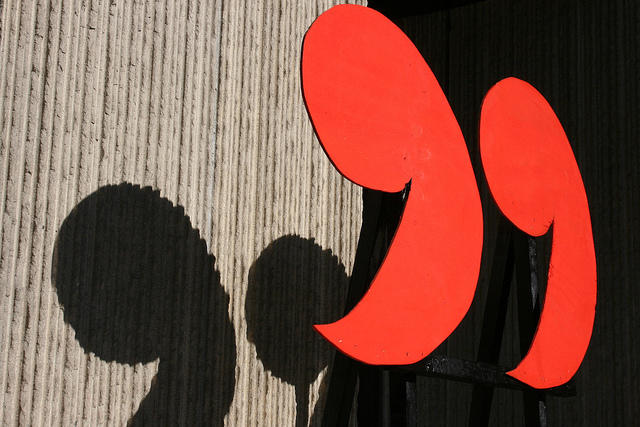
(photo: flickr/Quinn Dombrowski CC:BY-SA)
Almost every news or feature story – whether it’s for print, broadcast or online – benefits from having good quotes, voice clips or sound bites.
Quotes directly express the views of the people you talked to, lend credibility to your story, and liven up your writing. Quotes are like a spice that adds flavor and zest to your story. Without them, while your piece might well have a lot of informative facts, it can be pretty bland.
But figuring out exactly which bits to pull from your interviews and put in your story can be challenging even if you are an experienced reporter.
onMedia’s Kyle James has trained radio, print and online journalists in countries around the world for years. In this post, he offers a few guidelines on keeping an eye out for what’s quotable and what’s not.
![]() read more
read more
Photography tips for radio journalists
 As a radio journalist you’re supposed to produce a story for the ears but your editor may also want you to produce an online version – a story for the eyes.
As a radio journalist you’re supposed to produce a story for the ears but your editor may also want you to produce an online version – a story for the eyes.
It’s a common scenario in newsrooms around the world as broadcast and online newsrooms merge. It means you need to quickly learn new visual storytelling skills in order to adapt your stories for online publication.
While you can find loads of online training resources to help you get started, basic camera skills are only going to take you so far. If you’re required to produce photographs that document the story you’re covering, say an editor is suggesting to bring back eight photographs for a story or picture gallery, then you also need to employ skills from photojournalism.
OnMedia’s Guy Degen offers some tips for radio journalists to help produce strong images for their stories.
![]() read more
read more






